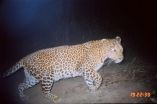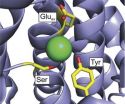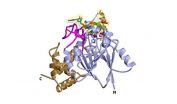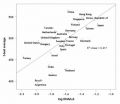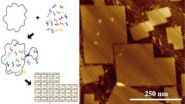(Press-News.org) Children who are bullied at ages 8-10 are more likely to suffer from sleep walking, night terrors or nightmares by the time they are 12 years old.
In a study published this week in Pediatrics, journal of the American Pediatric Association, Professor Dieter Wolke and Dr Suzet Tanya Lereya from the University of Warwick, found being bullied increases the risk for a category of sleep disorders known as parasomnias. These are sleep-related problems such as nightmares, night terrors or sleep walking.
A cohort of children from the Avon Longitudinal Study of Parents and Children (ALSPAC) were interviewed at elementary school age (8 and 10 years) about bullying experiences and then about parasomnias at secondary school age (12-13 years).
Professor Wolke, from Warwick Medical School and the Department of Psychology, said: "We found children who were bullied at age 8 or 10 years were more likely to have nightmares, night terrors, or sleepwalking at age 12 years. Moreover, those who were bullied and bullied others (bully/victims) were most likely to have any parasomnia.
"Consistent with previous studies, being a female, having persistent sleep problems, and emotional and behaviour problems in childhood additionally increased the risk for parasomnias at age 12 years."
Dr Lereya, from the Department of Psychology, added that stress could be an important mechanism for the association between being bullied and parasomnias.
"Nightmares may occur when anxiety exceeds a threshold level and several studies have suggested that trait anxiety may be related to the frequency of parasomnias. However, even after controlling for pre-existing anxiety problems our results showed that being bullied may increase the risk for parasomnias."
The authors suggest that: "If a child is experiencing frequent parasomnias, parents, teachers, school counsellors, and clinicians may consider asking about bullying. This would allow detecting bullied children and providing the help they need at an early time to reduce the negative effects of being bullied."
INFORMATION:
Notes to editors
The study, 'Bullying and Parasomnias: A Longitudinal Cohort Study', Dieter Wolke, Suzet Tanya Lereya, is published in Pediatrics, http://pediatrics.aappublications.org/content/early/2014/09/02/peds.2014-1295
To speak to Professor Wolke, contact him on 07824358737, to speak to Suzet Tanya Lereya, contact her on 07964236156
Alternatively please contact Kelly Parkes-Harrison, Senior Press and Communications Manager, University of Warwick, k.e.parkes@warwick.ac.uk, 02476 150868, 07824 540863.
Bully victims more likely to suffer night terrors and nightmares by age 12
2014-09-11
ELSE PRESS RELEASES FROM THIS DATE:
Study: Cat bites dog
2014-09-11
NEW YORK (September 11, 2014) – A new study led by the Wildlife Conservation Society reveals that in India's human dominated agricultural landscapes, where leopards prowl at night, it's not livestock that's primarily on the menu – it is man's best friend.
The study, which looked at scat samples for leopards in India's Ahmednagar's district in Maharashtra, found that 87 percent of their diet was made up of domestic animals. Domestic dog dominated as the most common prey item at 39 percent and domestic cats were second at 15 percent.
Seventeen percent of the leopard's ...
Is the pattern of brain folding a 'fingerprint' for schizophrenia?
2014-09-11
Philadelphia, PA, September 11, 2014 – Anyone who has seen pictures or models of the human brain is aware that the outside layer, or cortex, of the brain is folded in an intricate pattern of "hills", called gyri, and "valleys", called sulci.
It turns out that the patterns of cortical folding are largely consistent across healthy humans, broadly speaking. However, disturbances in cortical folding patterns suggest deeper disturbances in brain structure and function.
A new study published in the current issue of Biological Psychiatry suggests that schizophrenia is associated ...
How bacteria battle fluoride
2014-09-11
He's not a dentist, but Christopher Miller is focused on fluoride. Two studies from his Brandeis University lab provide new insights into the mechanisms that allow bacteria to resist fluoride toxicity, information that could eventually help inform new strategies for treating harmful bacterial diseases. The studies appear in The Journal of General Physiology (JGP).
Although most animal cells are protected from direct exposure to fluoride, this toxic element is a serious threat to single-celled organisms like bacteria and yeast. As a result, their plasma membranes carry ...
Structure of enzyme seen as target for ALS drugs
2014-09-11
VIDEO:
In this movie, the Dbr1 enzyme rotates 360 degrees. Partially inhibiting Dbr1 could represent a new way to treat most cases of amyotrophic lateral sclerosis (ALS), according to a new...
Click here for more information.
SAN ANTONIO, Texas, U.S.A. (Sept. 10, 2014) — Investigators from the School of Medicine at The University of Texas Health Science Center at San Antonio have determined the first high-resolution structure of an enzyme that, if partially inhibited, could represent ...
Hold the mayo
2014-09-11
You are what you eat, the saying goes, and now a study conducted by researchers at UC Santa Barbara and the University of Pittsburgh suggests that the oft-repeated adage applies not just to physical health but to brain power as well.
In a paper published in the early online edition of the journal Prostaglandins, Leukotrienes and Essential Fatty Acids, the researchers compared the fatty acid profiles of breast milk from women in over two dozen countries with how well children from those same countries performed on academic tests.
Their findings show that the amount of ...
Researchers create world's largest DNA origami
2014-09-11
Researchers from North Carolina State University, Duke University and the University of Copenhagen have created the world's largest DNA origami, which are nanoscale constructions with applications ranging from biomedical research to nanoelectronics.
"These origami can be customized for use in everything from studying cell behavior to creating templates for the nanofabrication of electronic components," says Dr. Thom LaBean, an associate professor of materials science and engineering at NC State and senior author of a paper describing the work.
DNA origami are self-assembling ...
New superfoods could help key protein keep bodies healthy
2014-09-11
A new generation of new superfoods that tackle heart disease and diabetes could be developed following research into a protein that helps keep cells in our bodies healthy.
Researchers at the University of Warwick found that the protein, called Nrf2, continually moves in and out of the nuclei of human cells to sense the cell's health and vitality.
When Nrf2 is exposed to threats to the cell's health it oscillates faster and activates an increase in the cell's defence mechanism, including raising the levels of antioxidant.
The researchers, from the University's Warwick ...
Childhood mentors have positive impact on career success
2014-09-11
New research from North Carolina State University finds that young people who have had mentors are more likely to find work early in their careers that gives them more responsibility and autonomy – ultimately putting them on a path to more financially and personally rewarding careers.
"We wanted to look at the long-term impacts on mentees in naturally occurring mentorship relationships, rather than participants in formal mentorship programs," says Dr. Steve McDonald, an associate professor of sociology at NC State and lead author of a paper on the work. "And we found ...
Graphene paints a corrosion-free future
2014-09-11
The surface of graphene, a one atom thick sheet of carbon, can be randomly decorated with oxygen to create graphene oxide; a form of graphene that could have a significant impact on the chemical, pharmaceutical and electronic industries. Applied as paint, it could provide an ultra-strong, non-corrosive coating for a wide range of industrial applications.
Graphene oxide solutions can be used to paint various surfaces ranging from glass to metals to even conventional bricks. After a simple chemical treatment, the resulting coatings behave like graphite in terms of chemical ...
Lurking bright blue star caught!
2014-09-11
This release is available in Japanese.
A team led by Gastón Folatelli at the Kavli IPMU, the University of Tokyo, has found evidence of a hot binary companion star to a yellow supergiant star, which had become a bright supernova. The existence of the companion star had been predicted by the same team on the basis of numerical calculations. This finding provides the last link in a chain of observations that have so far supported the team's theoretical picture for this supernova. The results are published in the Astrophysical Journal Letters and have wide implications for ...
